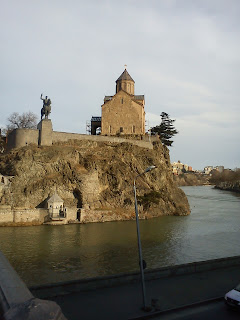International Organizations and Sustainable Tourism – WTO 5: Green, diversified and interconnected destinations
As recalled, reconciling the different needs of generating more travelers to grow with the reduction of the impact of travel is extremely complicated. While many travelers are committed to travel options that are as green as possible, e.g. by rail rather than by plane where possible, it is too early to expect each and every tourist to behave so.
The constant negotiation between conflicting priorities extends to the entire sustainability framework of the tourism industry and fosters heated debates and vibrant researches. There are a series of guidelines, which spans from cleaner transportations to the carbon emission measurement apps.
Awareness is the building block in environmental issues. Once we are all aware of our own impact, we are in the position to better chose. Green choices are out there: products certified for reduced impacts, projects that systematically associate the consumption of a resource with its regeneration through planting, use of renewable energy, energy conservation.
The changes underway require not only adequate awareness and behavior, but also foresight in planning and managing destinations. The WTO emphasizes that adaptive tourism industries must be developed both in seaside and mountain destinations. Destinations that could be affected by climatic changes must focus on the diversification of tourism products and services. It is a long-term and medium-term goal, but it is already an issue of urgency, in a volatile industry such as tourism.
Tourism is indeed as resilient, as volatile. A well-established destination can fall into oblivion in few unsuccessful seasons. This is a factor that - intertwined with the high level of innovation - must be taken into the utmost consideration. Diversification involves many socio-economic aspects of a destination, from technologies, structures, professionalism, to the attitude of the local community.
The responses of the WTO to climate change are mature and rooted in a long journey. Four events in the past decade have laid the foundations for the organization's take on the issue: the Second Conference on Climate Change and Tourism, Davos, in 2007. In the same year: the Ministerial Tourism Summit (England, November), the WTO General Assembly (Colombia, November) and the United Nations Conference on Climate Change (Indonesia, December).
The WTO network of observers, the International Network of Sustainable Tourism Observatories (INSTO) was created in 2004 with the aim of promoting sustainability and resilience. As the name itself indicates, sustainability in tourism is pursued through the systematic, regular and timely monitoring of the performance and impact of the tourism sector. Part of this project is aimed at enhancing the knowhow in various destinations, to compare them, to facilitate the exchange of information in order to obtain a broad and complete picture of the resources available and their use, and of experiences and practices of responsible management of tourism.
Through the systematic application of monitoring, evaluations, and information techniques, the network of observers makes available a series of key tools. These tools are there for planners, operators, administrators and those involved in various capacities in the sustainability of the tourism industry. Therefore, it is primarily a means of strengthening the institutional and private potential in the implementation of tourism strategies and processes.



Commenti
Posta un commento